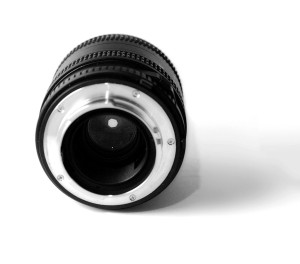(=EFL)
Distance between the principal point P2 and the focal point F2.
Don’t confuse with the back focal length (Back Focal Length BFL)!
(=EFL)
Distance between the principal point P2 and the focal point F2.
Don’t confuse with the back focal length (Back Focal Length BFL)!
describes, how much larger an image sensor is displayed on a monitor.
see also:
optical magnification
monitor magnification
When using entocentric lenses, objects at larger distances appear smaller, closer object appear larger.
see “comparison: entocentric – telecentric – pericentric”
= image of the physical aperture of the lens , as mapped by the lens elements between aperture and object. For front-aperture-lenses, entrance pupil and front aperture are identical.
This is the apparent opening that we see as humans when we look towards lens from the object side.
Diameter and position of the entrance pupil influence the F-number and thus the light sensitivity of a lens and also the angle of view.
Light of _each_ object point in the field of view of the lens reaches _each_ point on the front lens of the objective, but only the light directed to the entrance pupil of the lens reaches the matching image point.
Rays from the object point directed to the center of the entrance pupil are called “chief ray”.
The (object side) chief ray angle is the angle between optical axis of the lens and all chief rays. The viewing angle of the lens is twice max chief ray angle.
Here a 3D Graphics that shows in yellow the light from the Objetpoint that heads the entrance pupil and on its way hit’s the front lens of the system. Move the green point.
The example above is over emphasized. Here a more realistic example with a front iris, which also acts as a entrance pupil:
equal area lenses are a type of fisheye lenses
Equal area lenses use a image mapping function of the type
![]()
such lenses maintain areas. Objects that have the same area have images of the same area.
[table caption=”typical angles: ” width=”500″ colwidth=”50|50|50|50″ colalign=”center|center|center|center”]
weak,medium,strong,max
94,131,180,360
[/table]
see
Fisheye Types
= image of the physical iris of a lens, as seen through the (image side) lens elements.

(C) Wikipedia
Here we also see the Chief Ray Angle = CRA between the chief ray and the optical axis. Some sensors like for example from E2V accept only angles between 5 and 20 degrees, say != zero.
If (image side) CRA==0, we call the lens “image side telecentric”.